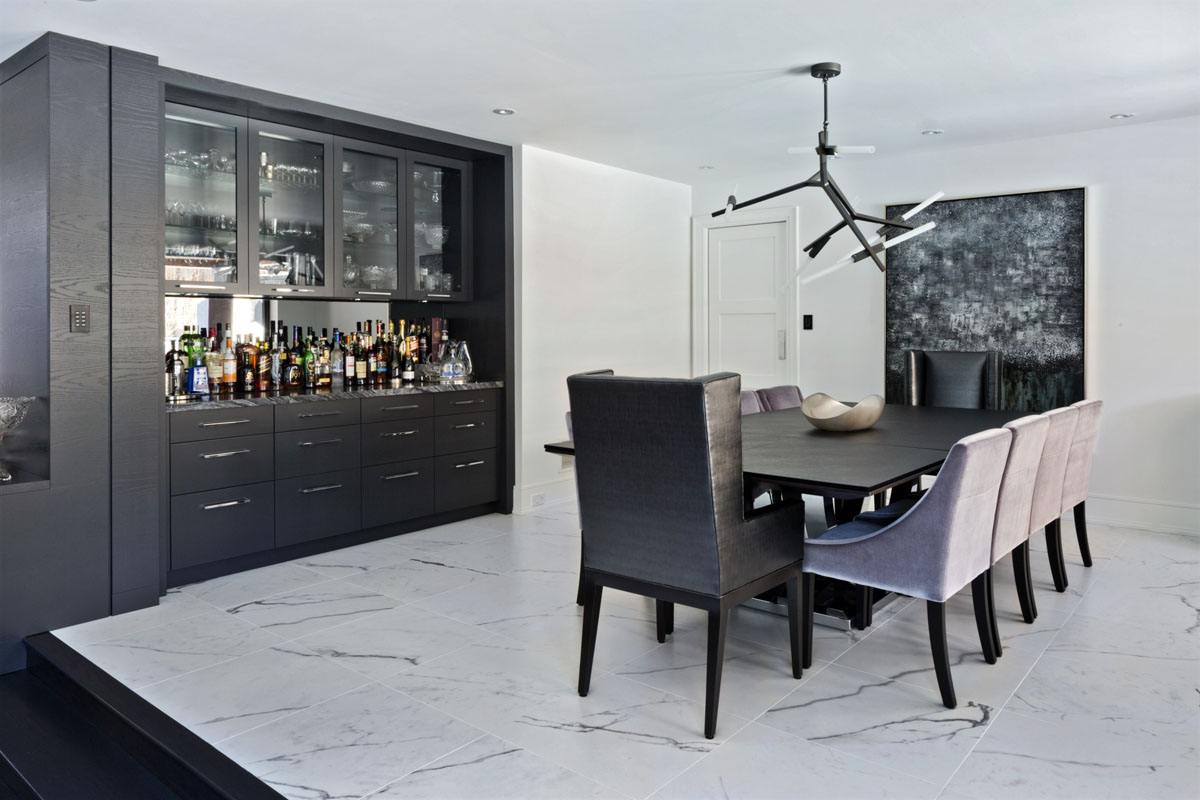
Contrary to popular belief, dining rooms are making a comeback in modern hones. 73% of responses in the Home Buyer Reference survey of January 2017 viewed the dining room as “essential or desirable” (National Association of Home Builders).
Why the resurgence in popularity? Well, these may be some of the reasons:
Family oasis in a hectic lifestyle
It’s tough living in modern life sometimes. It’s not so much that modern life is more difficult than life in the past. It can’t be with the sheer amount of technology around us to make our lives easier. It’s just that we’re so occupied by that technology sometimes that we lose sight of ourselves and one another.
It’s most apparent during mealtimes. Ever since the introduction of TV dinners in the 1950s, family meals have slowly descended into an everyone-for-themselves rush to a flickering screen.
Bringing back the dining room is one way to step back from the brink. The beauty of a dining room is that, by design, its only purpose is gathering everyone around to sit down for a meal. There are no TV screens or computer monitors or distractions of any other kind. It’s just the family, friends, food, and the conversation in front of you. It gives everyone a chance to re-learn how to focus on the present and how to be mindful to one another.
No matter how busy everyone’s schedules are, it’s nice to know there’s a constant like family dinners in the dining room to depend on.
Healthier eating
A study done in 2013 concluded that not paying attention to your meal may add to weight gain. Howard LeWine, M.D., of Harvard Health Publications elaborates more in that article: “For example, after you start eating, it takes 20 minutes or so before the brain begins to start sending out ‘I’m full’ or ‘I’m not hungry anymore’ signals that turn off appetite. If you are hurrying or not paying attention, it’s easy to take in many more calories than you need in 20 minutes.”
So when you have everyone taking meals in the distraction-free environment of a dining room, you’re promoting a healthier eating habit. You can even take it a step further by asking everyone to leave their cell phones at the entrance of the dining room. That’s crucial in this day and age when people focus so much on waiting for the next notification ping on their phones to arrive.
Clear separation of activity zones
While open-concept plans are meant to increase opportunities for family interaction, they’ve also diminished the amount of personal space everyone occasionally needs. How many times have you felt like you had nowhere to go except your bedroom because one of your family members were entertaining guests in the mega kitchen-living-room space?
A dining room allows them to chat long into the night while you can still relax in front of the living room TV in the evening. You can actually have some personal time without feeling trapped.
Fashion statement in the middle of your home
People used to dismiss dining rooms because they pictured a stuffy room with hardwood monstrosities you can’t wait to be excused from. But what if it doesn’t have to be that way?
In the open-concept areas, your interior decoration choices are limited because everything has to blend in together. In an enclosed dining room though, it can be its own little world.
You can make it as eccentric in style as you want. In fact, that’s how you can break free of the stereotypical dining room image. Here is the room where you can let your personal style shine while making it both modern and cozy. It’ll certainly be a conversation piece when you’re entertaining guests.
All this doesn’t mean the dining room can only be used for family meals. Feel free to give it another purpose during the day! Just make sure you can quickly reset it back to a dining room when dinner’s ready.








